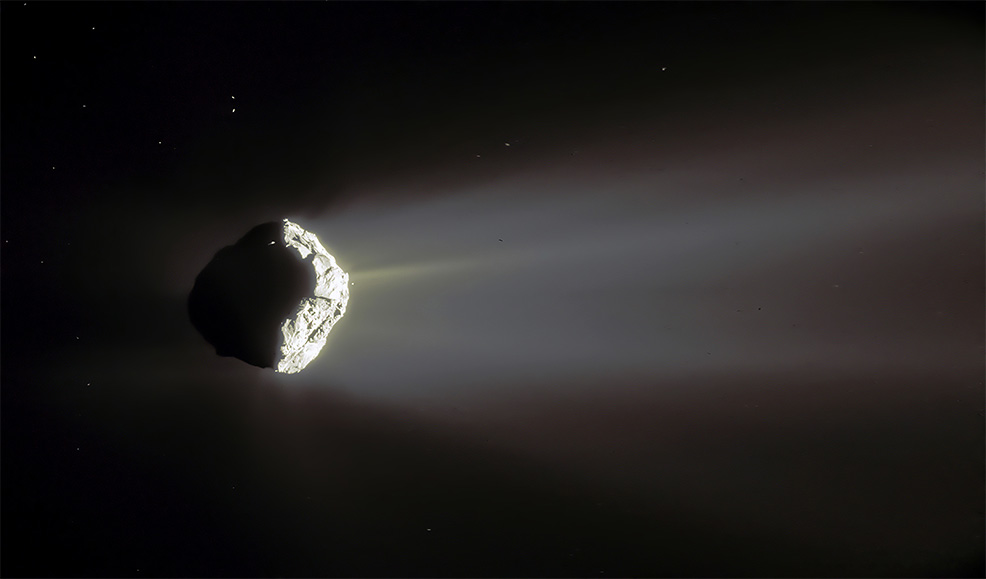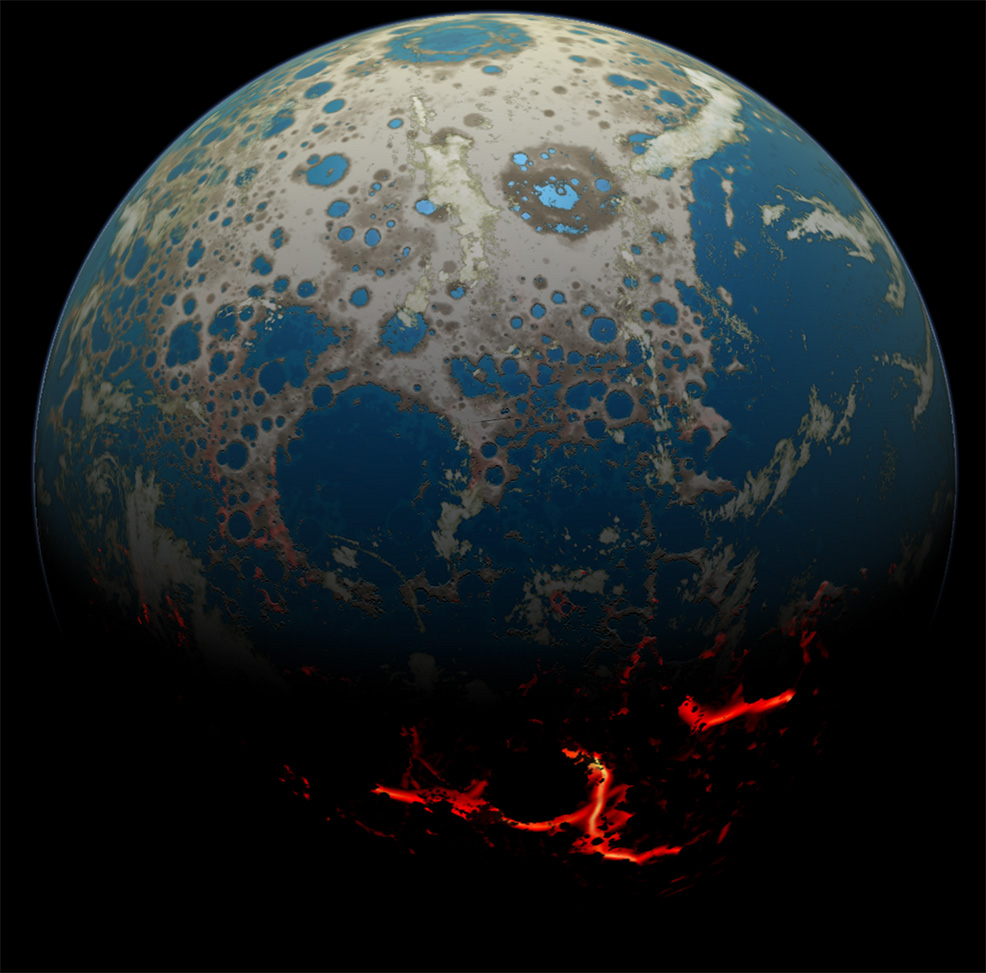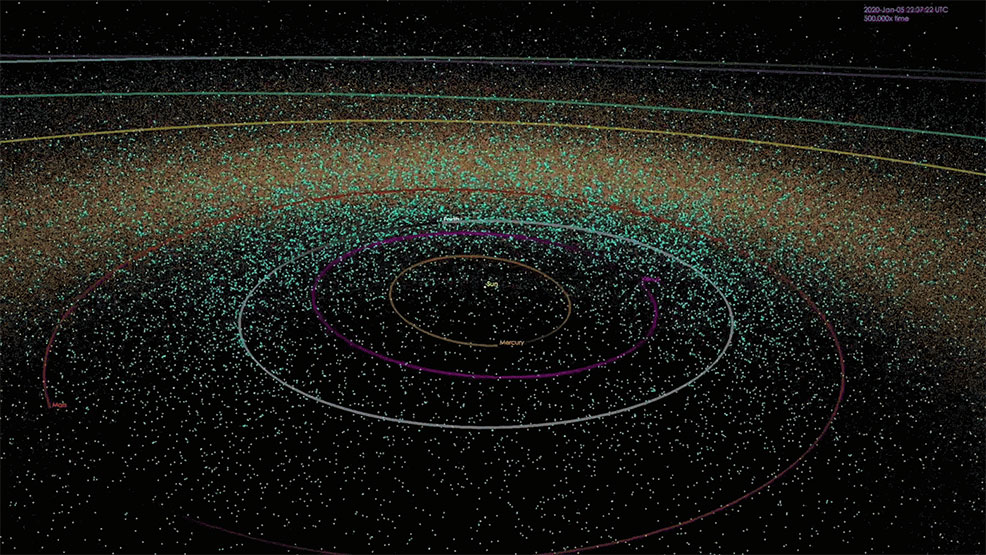
4th February 2019 Near-Earth asteroids could provide a billion tons of water resources A new study of asteroids published by the American Geophysical Union reveals a potential abundance of water resources in the vicinity of Earth.
A new study in the Journal of Geophysical Research: Planets – a publication of the American Geophysical Union – estimates the amount of water in near-Earth space rocks. These are generally defined as any small Solar System body with an orbital path in proximity to Earth and a closest approach to the Sun (perihelion) of less than 1.3 astronomical units (AU). The number of hydrated, near-Earth asteroids larger than 1 kilometre (0.6 miles) in diameter is difficult to pin down, but likely ranges between 26 and 80, according to the paper's authors, of which eight to 26 would be easier to reach than the Moon's surface. Many smaller hydrated objects, numbering between 350 and 1,050, could also be accessed relatively easily. In total, between 440 million and 1.3 billion tons of water could be extracted from the minerals in these asteroids. In liquid volume terms, that is between 400 and 1,200 billion litres, or enough to fill between 160,000 and 480,000 Olympic-sized swimming pools. "We know that there are minerals with water in them on asteroids. We know that from meteorites that have fallen to the ground," said Andrew Rivkin from the John Hopkins University Applied Physics Research Laboratory in Maryland, lead author. "It's also possible that Earth's water came largely from impacts."
Detecting the spectral signals of water in asteroids is a problem for ground-based telescopes. The absorption bands are the same parts of the spectrum that are either filtered out by most ground-based observatories or flooded with signals from water in Earth's atmosphere. Rivkin – along with co-author Francesca DeMeo, a planetary scientist from MIT – used a proxy to solve this issue. They instead looked for a particular kind of oxidised iron, which is known to be present in asteroids containing hydrated minerals. "Wherever we see the water band, we also see this specific oxidised iron band," Rivkin explains. The authors combined this proxy with known trajectories of near-Earth bodies to generate their estimates for water-containing asteroids. Rivkin hopes that a space-based telescope, such as the James Webb Telescope (due for launch in 2021) will narrow the range to provide a more accurate figure. The potential for asteroid mining has triggered a great deal of interest in recent years. Planetary Resources and Deep Space Industries – two private companies aiming to improve access to space resources – were founded in 2009 and 2013, respectively. In 2015, the U.S. Congress passed historic legislation (H.R. 2262) recognising the right of U.S. citizens to own space resources as property and encouraging the commercial exploitation of materials from asteroids. A similar law was passed by Luxembourg in 2017, which became the first European country to offer a legal framework ensuring the rights of private mining operators in space. During that same year, a report by Goldman Sachs revealed that asteroid mining is "more realistic than perceived", thanks to falling launch costs. More recently, ArianeGroup signed a contract with the European Space Agency to pursue mining of lunar regolith by 2025. In the coming decades, water is likely to be a prized commodity in space; not only for its importance to human survival, but also for use in propelling spacecraft to other parts of the Solar System. "There are a few different ways we can make the calculation, but all of the estimates suggest that hydrated asteroids are more common than we would think from the pieces that fall to Earth," the authors conclude. "Dozens of them are larger than 1 km in diameter and take less fuel for a round-trip spacecraft than to the surface of the Moon."
Comments »
If you enjoyed this article, please consider sharing it:
|









